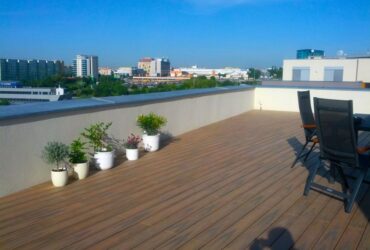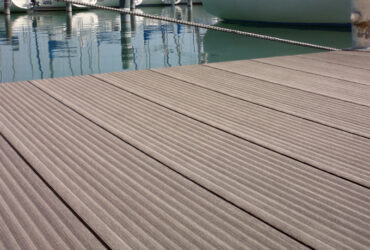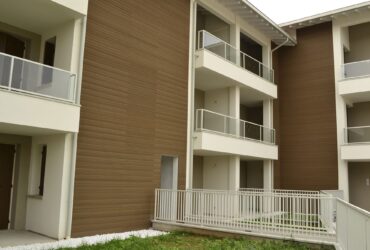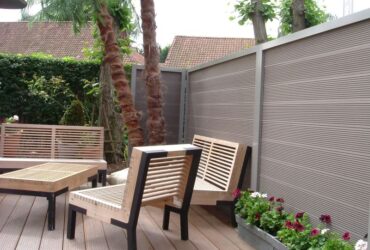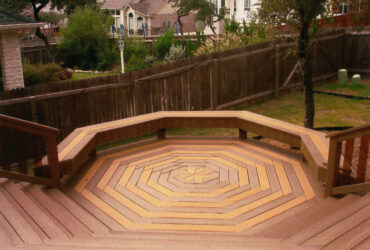Introduction to New Wood Plastic Materials and Their Applications
With the increasing awareness of environmental protection and the demand for sustainable development, wood-plastic materials have received widespread attention as a new environmentally friendly material. Wood-plastic composite materials, composed of wood powder and plastic, not only have the durability of plastic and the natural beauty of wood, but are also environmentally friendly and sustainable. It is widely used in flooring, wall panels, fences and other fields, and is closely related to our lives. It is widely used in outdoor courtyards, landscape gardens, parks and commercial places.

What is wood plastic?
Wood-plastic, namely Wood-Plastic Composites (WPC), is a new type of composite material that has emerged at home and abroad in recent years. Its preparation process involves using plastic materials such as polyethylene, polypropylene and polyvinyl chloride instead of conventional resin adhesives, mixing it with more than 35%-70% of waste plant fibers such as wood powder, rice husk, and straw, and extruding, Plastic processing techniques such as molding and injection molding are used for shaping, and finally sheets or profiles are produced. This kind of composite material is currently mainly used in building materials, furniture, logistics packaging and other industries.
Environmentally friendly and sustainable
Wood-plastic materials use waste wood, rice husk, straw and other waste plant fibers and plastics such as polyethylene and polypropylene as raw materials, reducing the demand for traditional wood, effectively utilizing resources and reducing environmental load.
Water and corrosion resistant
Due to the addition of plastic components, new wood-plastic materials have strong corrosion resistance and can resist erosion by fungi, insects and other organisms. This gives it long-term stable performance in humid environments.

Strong weather resistance
Wood-plastic materials have been specially treated to have strong weather resistance, can withstand ultraviolet radiation and high temperatures, and are not easy to fade or age.
High strength and stability
The processing technology of wood-plastic materials makes them have high strength and stability, are not easy to break and deform, and can withstand large loads and impacts.
Strong plasticity
Wood-plastic new materials have high plasticity during processing and can be formed into plates, profiles, railings, tables and chairs of various shapes and sizes through extrusion, molding, injection molding and other processing techniques. It can meet different design needs and personalized requirements.
Easy to install and maintain
The installation of wood-plastic materials is relatively simple, and can be assembled or fixedly installed. It has low maintenance costs and is easy to clean.

Beautiful and natural
The new wood-plastic material combines the natural texture of wood and the plasticity of plastic, and has a beautiful appearance and natural texture. It is available in a variety of colors, textures and surface treatment options to meet different aesthetic needs.
toxic free and safe
The new wood-plastic material does not contain harmful substances, is non-toxic and harmless, and meets health and safety requirements. It can be safely used in places where the human body comes into contact, such as furniture, children's toys, etc.
Wood-plastic new materials have become an ideal choice to replace traditional materials with their advantages of environmental sustainability, strong weather resistance, good corrosion resistance, excellent strength, and good plasticity. It is widely used in fields such as architecture, furniture, courtyard landscaping, parks, and commercial venues, contributing to the creation of beautiful, durable, and environmentally friendly products and environments.


